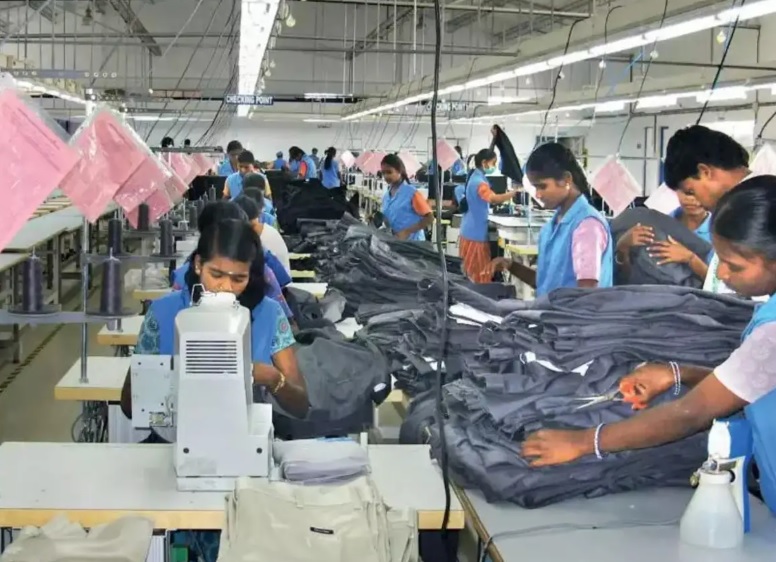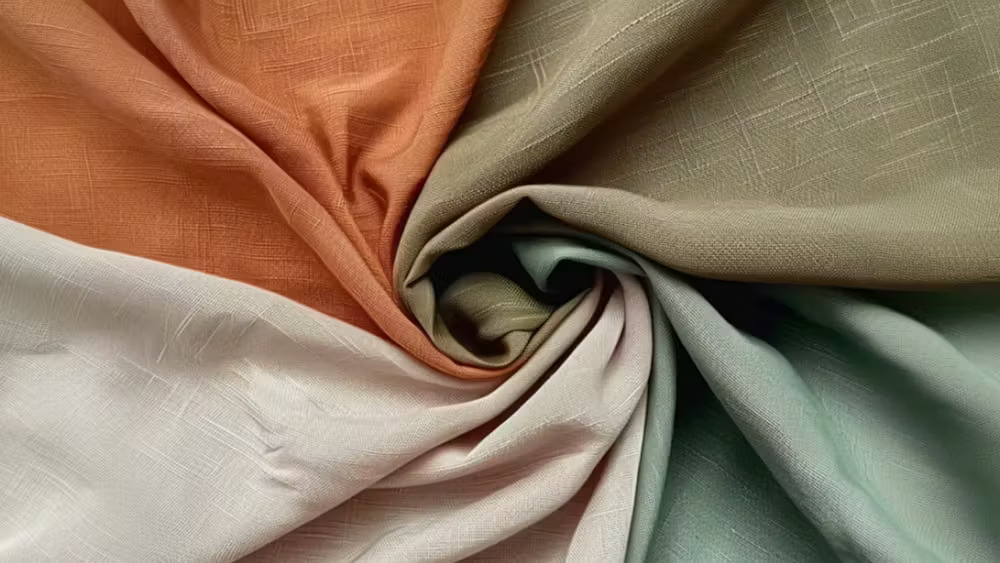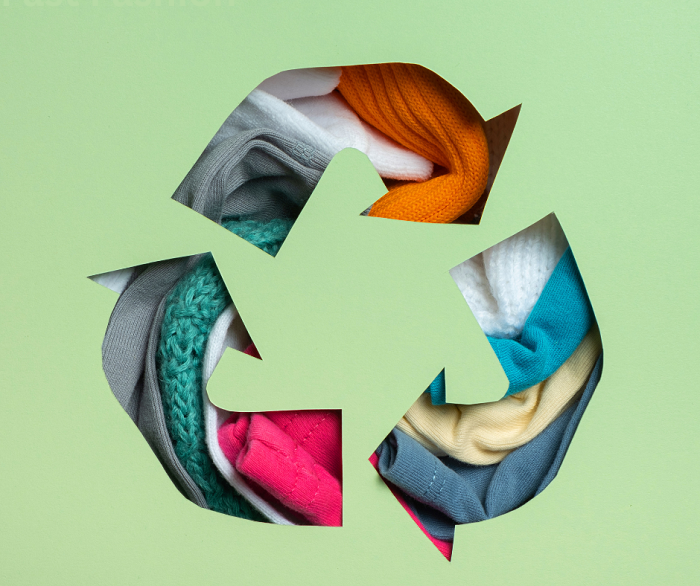FW
If Bangladesh RMG makers wish to establish warehouses in India, they would have to set up manufacturing units in the country, as the Indian government has hinted at a meeting held in Gujarat between the two parties. Shahidullah Azim, BGMEA Vice-President Shahidullah Azim, said that the government, during the meeting mentioned that if Bangladesh wanted to open a warehouse in India, they would have to establish manufacturing units for their interest, creating employment. Bangladesh would have to move forward with this policy proposed by the Indian government.
Azim was on a two-day visit to India and had travelled to Gujarat to inspect the possibility of setting up a warehouse to grab the local market there. A five-member delegation visited three economic zones during the trip, which included Sanand Industrial Estate under Gujarat Industrial Development Corporation, Amitar Green Hi-Tech Textiles Park Private Limited and Viraj Integrated Textile Park to assess if a warehouse could be set up. Azim said that they had selected Sanand Industrial Estate to set up a warehouse, based on the facilities offered by the zones’ management. Besides, Azim said that the state had uninterrupted power connection and other facilities while there is no obligation of allowing trade union there.
Bangladesh can get land at a cost of Rs 3,500 per sq. mt. while per unit electricity price at Rs 6.5, according to the offer. High land prices, according to Azim need to be bargained for at the high level G2G meetings. The domestic market in India is of $32 billion and offers duty-free access. Azim feels that if Bangladesh can establish a warehouse and distribution centre here, it could grab more market.
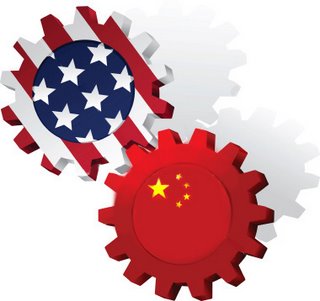
China to strengthen its position
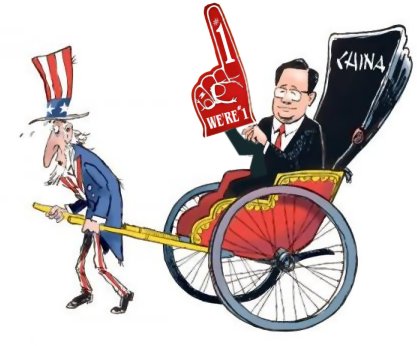
The report suggests annual apparel sales in China will reach $333,312 million in 2019, an increase of 25 per cent from $267,246 million in 2014. In comparison, apparel sales in the United States are estimated to reach $267,360 million in 2019, which is only 3 per cent higher than $260,050 million in 2014.
The study points out that China seems to be an even more competitive apparel market than the United States because no apparel brand was able to achieve a market share of more than 1 per cent in 2014 in China, whereas in the United States, market shares of several leading brands exceeded 2 per cent. Moreover, domestic brands overall outperform international brands in the Chinese market.
Despite its overall market size, as a developing country, dollar spending on apparel per capita will remain much lower in China than many developed economies around the world. In 2014, each Chinese consumer on average spent $240 on apparel versus $815 in the United States, even though apparel spending accounted for a larger share of household income in China (around 10 per cent) compared with the United States (less than 3 per cent).
Shift to value-added products benefit China
Sheng Lu, of the Department of Fashion & Apparel Studies, University of Delaware points out, it is time US apparel companies and fashion brands start thinking about their sourcing strategy seriously, specifically for the Chinese market. He says for many Chinese apparel companies, serving the domestic market will help them upgrade from low-value added manufacturing to higher-value added functions such as design, branding and distribution to boost exports.
Lu says controlling sourcing cost will be equally important for China as well as the United States. When China’s applied tariff rate is still as high as 9.63 per cent for textiles and 16.05 per cent for apparel, US fashion companies or fashion brands may not have many options but to use ‘Made in China’ to serve the Chinese consumers. But the equation can later change with ‘Made in China’ gradually getting replaced by ‘Made in Asia’, since several free trade agreements (FTAs) involving China such as CEPA are reaching finalisation.
While China may strategically use rules of origin in these FTAs and encourage domestic manufacturers to use China-made textiles for its products, Lu feels managing the apparel supply chain based on either ‘Made in China’ or ‘Made in Asia’ may not give a competitive edge to US companies over their Chinese counterparts.
www.euromonitor.com
The United States Fashion Industry Association (USFIA) and the Better Cotton Initiative (BCI) in partnership have come together to promote the cause of responsible cotton sourcing. USFIA represents the fashion industry that includes textile and apparel brands, retailers, importers and wholesalers, based in the US and is doing business globally. The Better Cotton Initiative, on the other hand, is an NGO that works with a multi-stakeholder group of organisations to support responsible cotton production across the globe.
Julia K Hughes, President of USFIA points out that they are thrilled to collaborate with the BCI. She adds that their members include major global brands and retailers, who are committed to responsible sourcing at all levels in the supply chain. Their members would be able to enhance this commitment from the ground up with this collaboration and would also learn from the BCI.
BCI and USFIA, both stand to mutually benefit with this partnership from each other’s expertise. The BCI would give information about supporting responsibly grown cotton to USFIA members. BCI members, in turn would get support of USFIA to navigate the complex sourcing issues in the US and around the globe. The USFIA will enable the BCI to connect with key stakeholders via publications, educational events and networking opportunities.
Daren Abney, Membership Engagement Manager, BCI says that they are excited about joining an organisation as repute as the USFIA and are looking forward to exploring this partnership and how it can enable the supply chain of the future.
The four-day trade show, Avantex Expo, will be held in Paris from September 14 to 17, 2015. The Avantex-Exhibition for Hightech Fabrics Technologies is hosted in Paris twice a year, within Texworld and Apparelsourcing. The show being organised by Taiwan Textile Federation, Messe Frankfurt France SAS, Messe Frankfurt Exhibition GmbH is held at Paris, Le Bourget.
Dedicated to the exclusive world of apparels, the Apparel Sourcing Paris event marks the presence of children’s wear, women’s wear, menswear, activewear - knits, wovens, denim, collections, suiting, contemporary, intimates/lingerie, loungewear/sleepwear, fashion accessories, finished clothing, packaging materials, clothing accessories and other products.
The tradeshow Apparelsourcing Paris-International Apparel and Fashion Sourcing Show, this year, served as a platform for 164 exhibitors. Apparelsourcing Paris saw 13,639 visitors. Apparelsourcing Paris is held twice a year, with Texworld Paris. An international trade fair, it is an excellent platform for buyers and sellers to cultivate the best relationship. There are strong marketing and networking opportunities for all exhibitors at the event and has a wide variety of collection for the visitors, as well.
Non-compliance with many conventions of European Union (EU) related to human rights and environment may cause, Pakistan to lose its GSP Plus status. Pakistan’s compliance of its conventions and imports are being reviewed by the EU and its officials are visiting Pakistani factories, without notifying the government. The EU Ambassador had a meeting with businessmen at Karachi Chamber of Commerce and Industry KCCI.
A decline of orders from Pakistan is what prompted this move. Muhammad Ibrahim Kasumbi, acting president KCCI recently stated that trade facilitation would discontinue if the EU faces more compliance issues. In January, the EU would be having a review meeting.
In December 2013, Pakistan was granted GSP Plus status, which opened doors for huge opportunities. However, the country failed in getting full duty benefits for free exports. As per the status available until 2017, the country gets free market access to 96 per cent of the items exported to the EU markets. Provided that Pakistan implements 27 conventions of the EU. The government lacked in fulfilling the conventions, though the private sector was fulfilling many of them, said Kasumbi. He added that textile sector exports to the EU are about 80 per cent and comply with around 80 per cent conventions.
Capital punishment is prohibited according to the EU conventions, yet Pakistan has resumed it. However, continuity in exports show that EU may have ignored it, as Pakistan is fighting with terrorists who could emerge again if not punished. Besides, Pakistan has not utilised 10 per cent of its potential of exports to the EU.
Foreign buyers are increasingly sourcing Bangladesh-made terry towel products because of cheap labour, utility cost and duty-free access to the EU, among others. Experts say, this has helped the industry flourish over the last three decades. The industry though, could not flourish well mainly because of the absence of government policy support, they added. The industry has seen a total of Tk 55 billion investments during the period.
If gas supply, lower bank interest rates and incentives are ensured to retain its competitiveness, the country can earn $10 to $12 billion from export of home textile and terry towel products within a couple of years, feel industry experts. More than 100 units established in the last three decades produce both home textile and terry towel products. As per Bangladesh Terry Towel and Linen Manufacturers and Exporters Association (BTTLMEA), out of these about 71 are terry towel producing units that have 6,500 looms and production capacity of 135 million kilograms.
The country produces various types of towels like towel, bar mop, hand towel, bath towel, dish, glass, kitchen, shop towel, kitchen gloves, dish clothes, surgical towel and draw sheet. Khandkar Abdul Muktadir, Chairman, BTTLMEA said that these products are a must for household use, tourism and hospitality industries.
He added buyers are looking for an alternative to China where the production cost has increased significantly mainly due to higher labour cost. Thus, the sub-sector of the home textile industry has a huge potential. Besides, global tourism and hospitality industries are growing, and so, the demand for such products is also on the rise, Muktadir stated.
Yuan devaluation has sharpened the competitive advantage of Chinese products. This is worrying Indian manufacturers who import polyester yarn as a textile raw material from China. India imports a portion of its requirement from China and South Asian nations such as Malaysia and Indonesia. With currency devaluation, fears of dumping have now surfaced.
China on August 11 took monetary policy measures that resulted in its currency losing strength by about two per cent and more on consecutive days, triggering a rout in the global stock markets and improving prospects of Chinese goods in the global market, including India. The Indian market for polyester yarn hovers in the range of 1.8 billion kg, with a value of approximately Rs 2.16 lakh crores. The country’s largest yarn markets are in Ludhiana, Punjab, and Malegaon in Maharashtra. The Chinese yuan devaluation is meant to boost sagging exports.
Chinese polyester yarn is now increasingly made from recycling poly-ethylene terephtha (PET) bottles. A large portion of Chinese knitters and weavers has adopted recycling PET bottles. With more efficiency refinements, the quality of PET bottle yarn is slowly beginning to compare favorably with India’s virgin yarn produce.
Major clothing retailers sourcing from Myanmar have welcomed the minimum wages for the garment industry. Labor costs in Myanmar are ranked second lowest in the world. More than one new garment factory opened every week in the country last year, amid a wave of new orders from international players that has tripled export revenues from clothing in three years. Though Myanmar is blighted with extreme social and compliance risks such as poor working conditions, child labor and human trafficking, many investors see the country’s modest reforms as a move in the right direction compared to other major garment producing countries in the region.
The decision to set a minimum wage in Myanmar came after 13 companies including M&S, Primark and H&M indicated their support for such a move. The reasoning is that this would make the country more attractive to foreign investors. new minimum monthly pay for workers means Myanmar will retain a competitive advantage over rival garment manufacturing states such as Vietnam and Cambodia where the monthly minimum wage is higher. However, many factory workers say they are forced to work overtime to meet production targets and that they are not paid for extra work.
Mount Vernon FR and Carhartt, America’s premium work wear brand since 1889, have teamed up to launch the newest advancement in flame resistant (FR) clothing called the Carhartt Flame Resistant Rugged Flex Jean. The product combines FlexTex FR denim from Mount Vernon FR with Carhartt’s Rugged Flex stretch technology to provide comfort and protection in any work environment, while offering unique flexibility for maximum range of motion.
Known for manufacturing high-quality protective fabric, Mount Vernon FR is also leading the way in developing FR fabrics with added comfort in mind, such as Crossbill Flex FR, available exclusively with Carhartt. The Carhartt FR Rugged Flex Jean utilizes fabric with an elastometric fibre that has bilateral flex, allowing it to elongate sideways and diagonally, eliminating any sagging or bagging, and making reaching and bending easier for workers.
Carhartt FR Rugged Flex Jeans feature an arc-resistant button closure, a brass zipper fly with Nomex FR zipper tape, and Carhartt hallmarks like triple-stitched main seams for added strength and durability. The jeans are available in deep indigo wash, a premium shade that transitions seamlessly on and off the job in order to meet every work and lifestyle need. Finally, the finished jeans are mechanically washed to create a soft finish, ensuring that the wearer experiences the most comfortable fit.
www.carhartt.com
www.mvmfr.com
China’s production of extra-long staple (ELS) cotton could be three times last year's crop in 2015-16. Output could be as much as 1,80,000 tons, triple of last year's 60,000 tons. ELS cotton or pima cotton is top quality cotton and makes up a tiny portion of total cotton consumption. It is mainly used by luxury shirt brands and in high end bed sheets. Chinese mills consume most of the fiber but local output declined under a government stockpiling policy that paid generous prices to farmers for regular cotton and offered no incentive to growers of higher quality ELS.
ELS premium over regular cotton has risen significantly in recent years after drought and competing crops in California reduced production in the world’s top exporter. After China abandoned stockpiling last year, and offered new subsidies connected to market prices, farmers began to plant significantly more ELS. China’s subsidy for the fiber is 1.3 times the regular cotton subsidy.
A smaller US crop will do little to support prices, given China’s surge in output. Chinese traders are not interested in US imports, since they have expectations of lower Chinese prices. However, China will buy some US pima for certain types of yarn.







